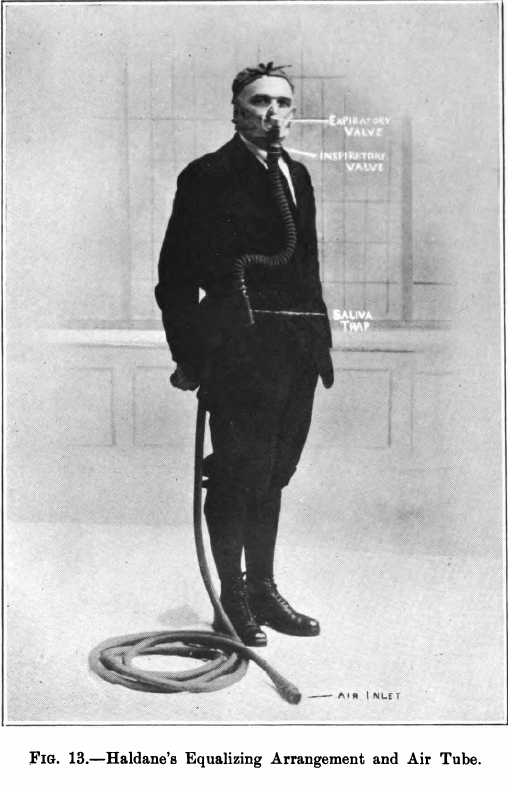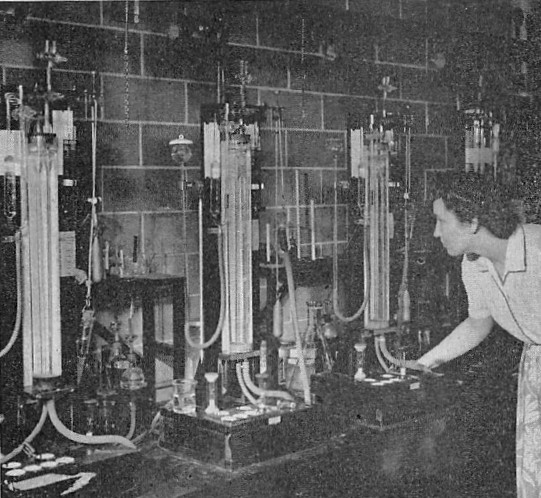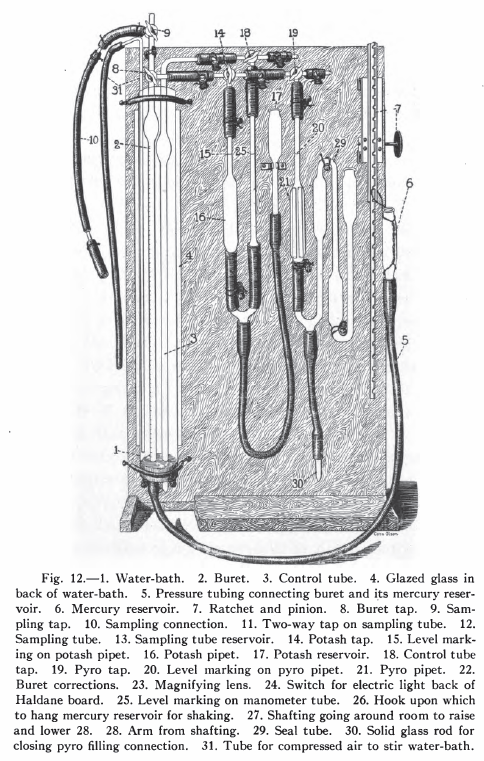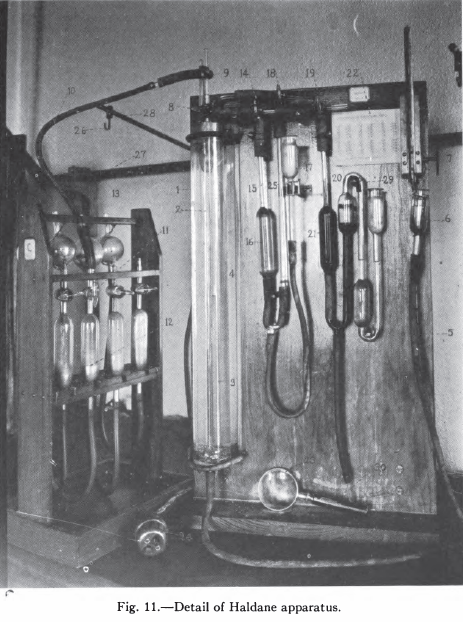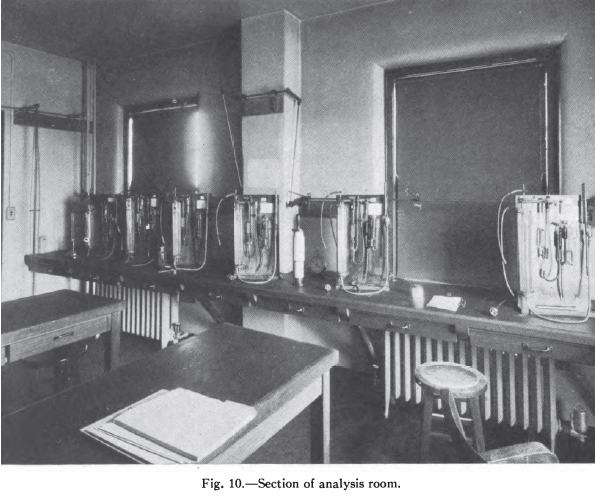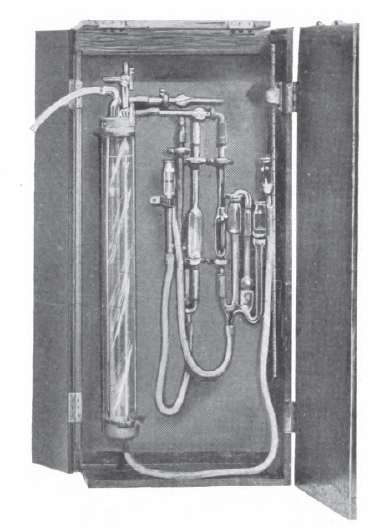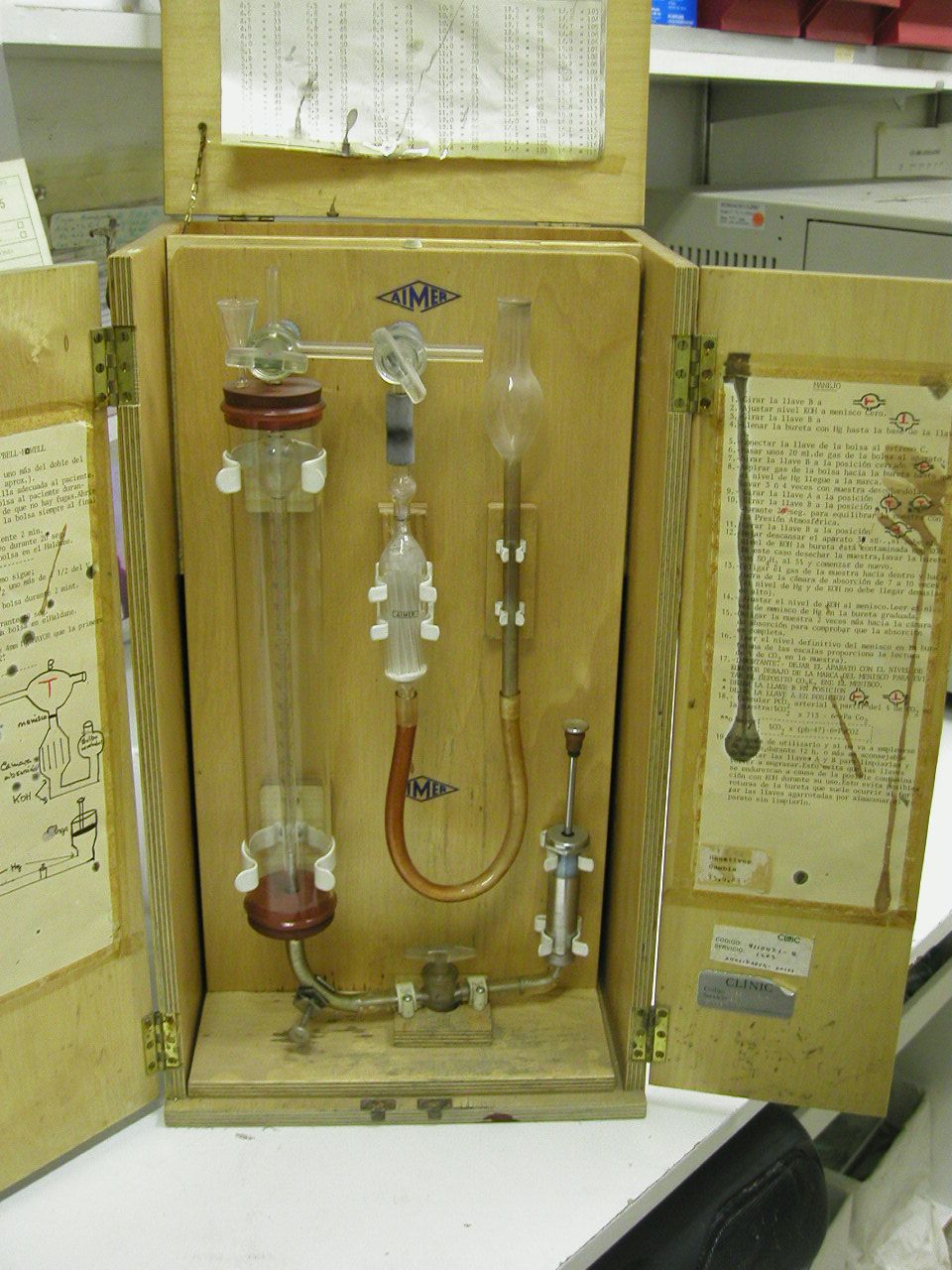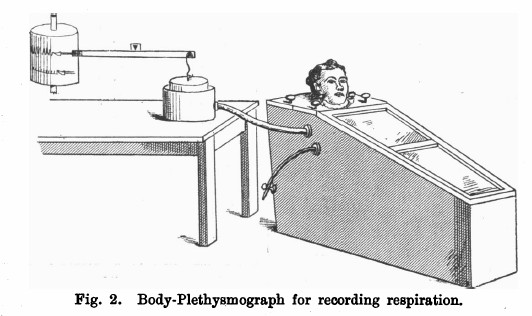
From Johns Scott Haldane and John Gillies Priestley. “The regulation of the lung‐ventilation.” The Journal of physiology 32.3-4 (1905): 225-266.
“In investigating the normal respiratory ventilation is is evidently important to avoid breathing through tubes, vales, etc,. and equally important to have a definitive quantitative record of the air breathed. In order to attain these two objects we employed a body plethysmograph arranged as follows (see Fig. 2).
“The box of the plethysmograph was of such a size and shape as to include as small a space as practicable, and yet enable the subject of the experiment to sit in perfect comfort. Its internal dimensions were as follows:–Floor, 45 inches long. Back, 19-1/2 inches wide x 24-1/4 inches. Lid, 19-1/2 inches wide behind x 16 inches in front x 14-3/4 inches. Sloping front, 37-1/4 inches x 16 inches x 10 inches. End, 10 inches wide by 12-1/2 inches high.”
“The lid was in two parts, with a circular aperature in the middle, through which the neck passed. Thumb-screws were provided for fastening it to the box, and all joints, screw-holes, etc., were made tight with “plasticene” (modelling wax). Air-tight connection was made between the neck of the subject and the lid of the box by means of a rubber collar with a broad flange, which was slipped over the head, and fitted the neck as tightly as possible without causing congestion. The flange was pressed down tightly on a layer of plasticene on the lid of the box by a ring of wood. This wooden ring was of course in two pieces, and was pressed down on the collar by means of thumb screws.
“In the side of the box were two holes into which tubes were fitted by means of corks. One of these was connected with a rubber tube for letting air into or out of the box to adjust the level of the writing-point and counteract, if necessary, the influence of rise of temperature in the box. The other was connected with the recording apparatus by means of rubber tubing 1 inch in diameter.
“The recording apparatus itself was arranged as shown in the figure. The cylincer suspended to the balance beam was of light tin plate. Two sizes were used — of 8 and 12 inches diameter — according to the depth of breathing expected. As the up and down movements of the writing-point traced on the smoked cylinder were proportional to those of the bell-jar.”
